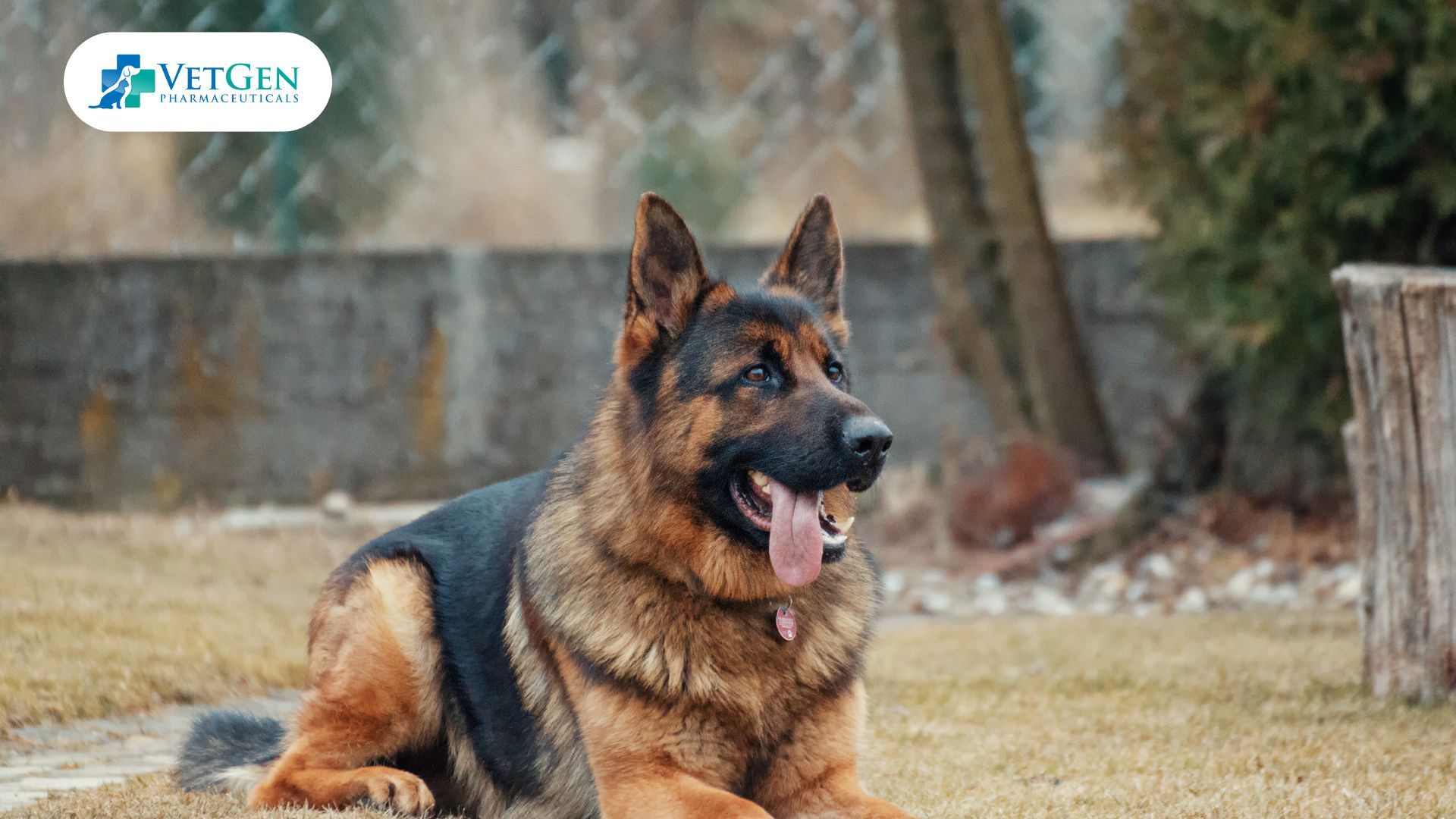Table of Contents
It is one of life’s greatest joys to own a dog. These friendly creatures become part of our families within the shortest time possible and offer companionship, happiness, and a lifetime of memories. But one of the most painful things about pet ownership is the knowledge that their life with us is limited. Dogs have dissimilar life expectancies depending on the breed, their genes, health conditions, and the way they are cared for.
In this blog, we will discuss the lifespan of popular dog breeds such as the Golden Retrievers, Pugs, and others.
Golden Retrievers: The Ever-Loyal Companion
Golden Retrievers are friendly, intelligent, and loyal dogs that are popular as pets. These dogs are medium to large in size and are preferred as pet dogs, therapy, and service dogs.
Average Lifespan: 10-12 years
Common Health Issues:
- Cancer: Sadly, Golden Retrievers are very susceptible to different forms of cancer, particularly hemangiosarcoma and lymphoma.
- Hip Dysplasia: This is a familiar problem in giant breeds, which results in lameness and arthritis.
- Heart Problems: Subvalvular Aortic Stenosis (SAS) is a heart disease that is common in this breed.
Golden Retrievers are very healthy if they are fed well, exercised regularly, and taken for their checkups to ensure any health issues are detected early.

Pugs: The Amorous and Frisky Friend
Pugs are relatively small dogs, but they have a very big character. These dogs have wrinkly faces and curled tails, are friendly, and enjoy the company of their human families.
Average Lifespan: 12-15 years
Common Health Issues:
- Brachycephalic Syndrome: Because of their flattened faces, Pugs have a hard time breathing, especially in hot weather conditions.
- Obesity: Pugs eat very much, and overeating causes them to be overweight and other diseases such as diabetes and joint pain.
- Eye Problems: Their large eyes are prone to diseases such as corneal ulcers and dry eye.
Pugs are known to live longer when their diet is regulated, they do not exercise too much and they should not be exposed to hot weather.

German Shepherds: The Brave and Versatile Worker
German Shepherds are among the most diverse dogs, used for police work, for the disabled and as pets. They are intelligent and protective, and this has made them to be demanded all over the world.
Average Lifespan: 9-13 years
Common Health Issues:
- Hip and Elbow Dysplasia: These are common orthopedic problems in the German Shepherd and can cause arthritis.
- Degenerative Myelopathy: This progressive spinal cord disease can cause paralysis in older dogs.
- Bloat: Bloat or gastric torsion is a serious condition that can be fatal and is common in large breed dogs such as the German Shepherd.
Dietary needs and exercise are crucial in ensuring that German Shepherds remain healthy and energetic even when they are old dogs.

Labrador Retrievers: The Energetic All-Rounder
Labrador Retrievers are always among the top favorite breeds of dogs across the globe. They are friendly and very active which makes them suitable for families, hunters and people who need therapy dogs.
Average Lifespan: 10-14 years
Common Health Issues:
- Obesity: Labs are known to be food lovers and therefore can easily become overweight.
- Hip and Elbow Dysplasia: These are prevalent in Labs and may cause arthritic discomfort and restricted movement.
- Heart Disease: Labs are also predisposed to SAS and other heart diseases as is the case with Goldens.
Affordable exercise and portion control feeding can assist Labs to live long healthy lives.

Spitz Dogs: The Lively and Soft-Mounted Friend
Spitz dogs are a breed of dogs that have a dense coat, erect pointed ears and bushy tail which is curled over the back. Common spitz types of dogs are the Samoyed, Keeshond, and Pomeranian. Spitz dogs are versatile, and these dogs are famous for their happy-go-lucky attitude and ability to be on their own.
Average Lifespan: 12 to 16 years (it depends on the particular breed).
Common Health Issues:
- Dental Issues: Dental issues are also common in this group of spitz breeds although Pomeranians are a smaller breed than the other breeds mentioned above.
- Patellar Luxation: This co-occurring disease, in which the kneecap dislocates, can be widespread in smaller spitz breeds.
- Hypothyroidism: Some of the spitz breeds may suffer from hypothyroidism that causes the animal to gain weight and become more lethargic.
Spitz dogs require grooming to deal with their long fur and need to be exercised and mentally stimulated to avoid getting bored.

Chihuahuas: The Tiny Dynamo
Chihuahuas are tiny dogs but they have relatively long life expectancies when compared to most large breeds. These small dogs are very spirited and protective of their owners.
Average Lifespan: 14-16 years
Common Health Issues:
- Dental Problems: One of the reasons that Chihuahuas are vulnerable to dental diseases is that they have small mouths.
- Heart Issues: Congestive heart failure is prevalent in this breed and the most frequent cause is mitral valve disease.
- Hypoglycemia: Hypoglycemia is possible, especially in puppies or in small Chihuahuas.
Chihuahuas are known to live for many years and this is brought about by taking them for dental care for dogs regularly and feeding them on balanced diets.

Factors That Affect the Lifespan of Popular Dog Breeds
- Genetics: Purebred dogs are least likely to be affected by serious hereditary diseases.
- Diet: Proper feeding of the dog with the right kind of food and in the right proportion to the size, age and activity level of the dog can help to check on obesity in dogs and other related diseases.
- Exercise: Daily exercise helps dogs to remain physically active and also their brains are engaged in activities.
- Preventive Healthcare: Annual physical examination, vaccinations, and early diagnosis of the diseases are helpful in increasing the Lifespan of Popular Dog Breeds.
- Environment: Animals that are well cared for, live in safe stress-free conditions, with lots of affection, will live longer.
- Spaying and Neutering Impact Dog Health: Spaying or neutering can influence a dog’s health and lifespan by reducing the risk of certain diseases and behavioral issues.
Conclusion
Knowing the average Lifespan of Popular Dog Breeds and diseases that are common with the breed of your dog will assist you to give your pet the best care it deserves. The Pug is cute and entertaining, the Golden Retriever is loyal and obedient, and the Spitz is soft and fluffy, each breed has its own pleasures and problems. Thus, being attentive to your dog’s health will help him or her to live a long, happy, and productive life with you.
Frequently Asked Questions
1. What Can I Do to Make My Dog Live Longer?
Feed your pet a healthy diet, exercise, have them checked by a vet regularly, and give them some brain work out. Preventive care is very important in diagnosing health complications in your dog before they worsen hence improving its quality of life and life span.
2. What Health Problems Are Pervasive in Golden Retrievers?
Golden Retrievers are known to be sensitive to cancer, hip dysplasia for dogs, and heart diseases such as SAS. These risks can be well managed through proper checkups by the veterinarian and leading a healthy life.
3. Are Small Dogs Really Longer Lived Than Large Breeds?
Yes, but smaller dogs tend to live longer than large breeds of dogs. For example, a Chihuahua can live up to 16 years, while a German Shepherd can live only 9-13 years.








